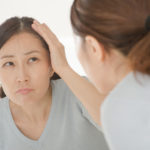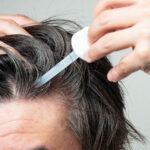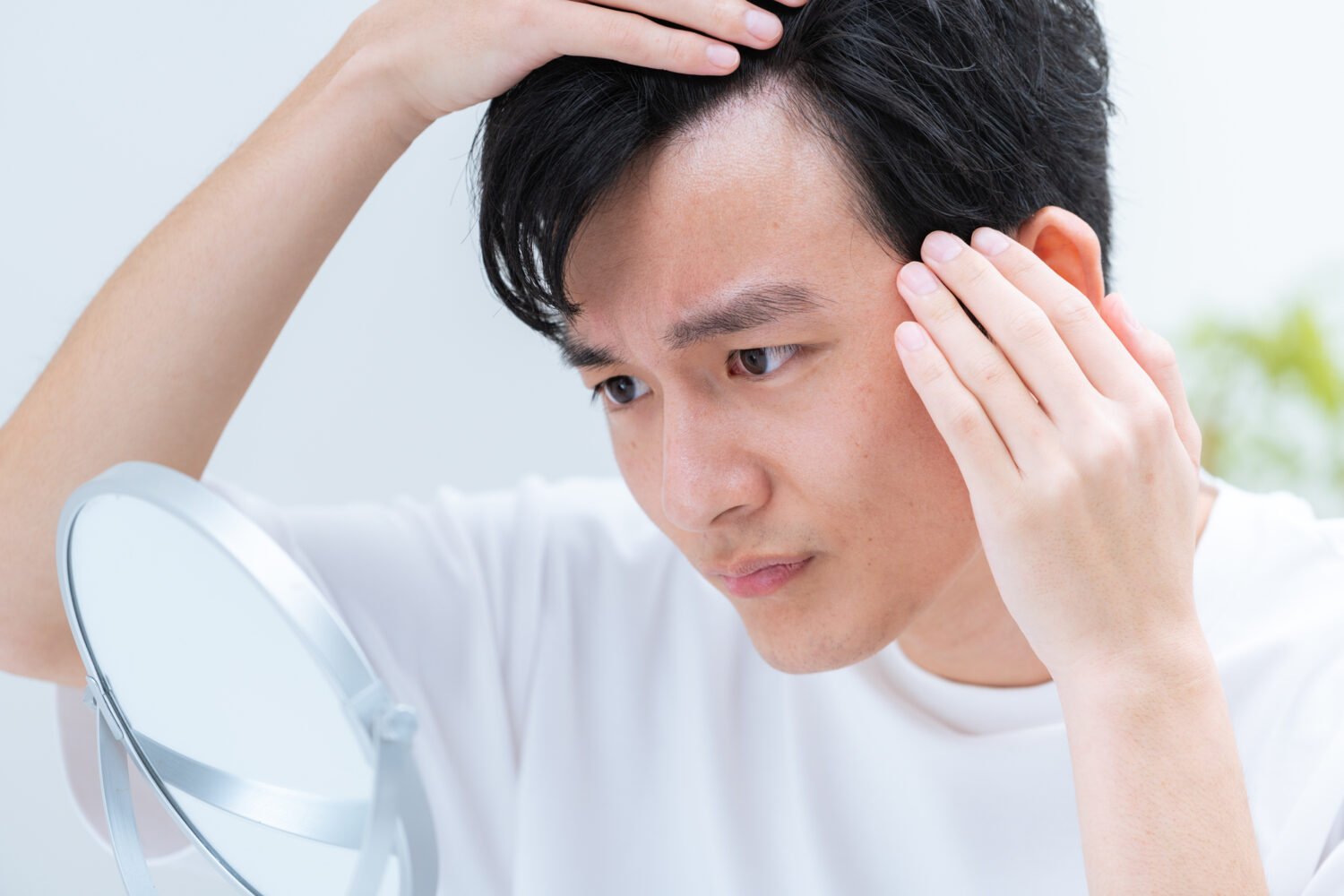
Have you ever felt that your frontal hair has been thinning lately, or that your bangs are getting lonely? In fact, many men in their 20s to 50s suffer from frontal hair thinning.
If left unchecked, the thinning hair will progress rapidly and may rob you of your confidence and smile.
But don’t worry. Frontal thinning hair can be improved with the right knowledge and appropriate measures. It is important to determine the cause of your thinning hair and choose a treatment that matches the stage of progression.
This article details basic knowledge about thinning hair in the frontal area, from causes of thinning hair to treatments, prevention methods, and how to determine if you have AGA. With the right knowledge, take the first step toward improving thinning hair today.
For all those suffering from thinning hair. Let’s find a treatment that will help you experience the benefits of hair regrowth with a free consultation at Osaka AGA Kato Clinic. Make an appointment on Line now: click here.
この記事で説明する内容は?
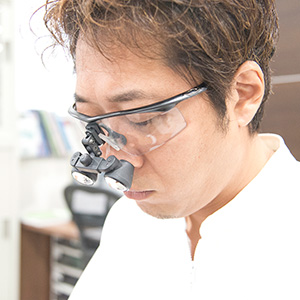
Kentaro Kato, Hospital director of Osaka AGA Kato Clinic group, specializing in comprehensive hair treatment. We specialize in cutting-edge treatments for a variety of clinically proven effective treatments for thinning hair and hair loss. Graduated from Faculty of Medicine, Kinki University in 2001 Worked at plastic surgery of Osaka Medical and Pharmaceutical University Hospital as an anesthesiologist from 2001 to 2005. Worked as a head of plastic surgery at major cosmetic surgery, Hair Transplant Department from 2005 to 2011. Opened Osaka AGA Kato Clinic in 2011. Japan Society of Plastic and Reconstructive Surgery, Regular Member. The Japanese Society for Regenerative Medicine, Regular Member. World Academy of Anti-Aging & Regenerative Medicine, Regular Member.
Causes of thinning hair in the Frontal area
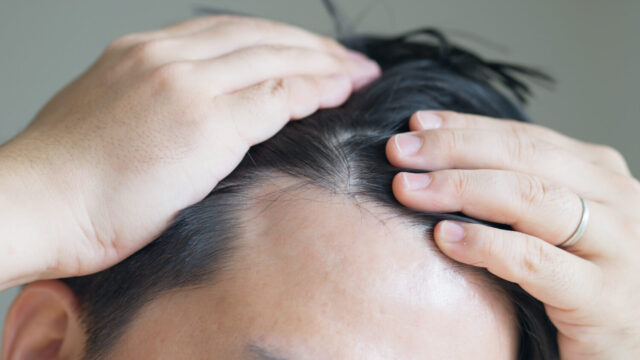
Thinning hair in the frontal area is caused by a complex combination of factors; dihydrotestosterone (DHT), a type of male hormone, is deeply involved in the development of AGA.
Genetic Factors
Genetic factors play a major role in the development of AGA; individuals with genes that predispose them to AGA have a higher risk of thinning hair than those who do not. In particular, individual differences in the following genes are thought to be related to the development of AGA
- AR gene
- Genes involved in male hormone metabolism
AR gene
The AR gene encodes a receptor for male hormones (the site to which male hormones bind).
The AR gene has a repeating sequence called CAG. It is known that people with a low number of repeats of this CAG (CAG repeat count) are more susceptible to DHT, a type of male hormone, and more likely to develop AGA.
In other words, a low CAG repeat count makes a person more susceptible to the stronger effects of the same amount of DHT.
Genes involved in male hormone metabolism
Individuals also have different genes for enzymes involved in the metabolism of male hormones. These enzymes are responsible for converting or breaking down male hormones into DHT. Individuals with individual differences (polymorphisms) in genes that result in higher enzyme activity may have increased amounts of DHT in their bodies, increasing their risk of AGA.
However, genetic factors alone do not determine the onset of AGA. Various environmental factors, such as lifestyle and stress, also act in combination to influence the onset and progression of AGA. Even for those with a high genetic risk, it is possible to delay or improve the progression of thinning hair by taking appropriate measures.
Hormonal imbalance
One of the main causes of frontal hair thinning is hormonal imbalance. In particular, dihydrotestosterone (DHT), a type of male hormone, has a significant impact on the hair growth cycle.
DHT is produced when the male hormone testosterone is converted by the enzyme 5-alpha-reductase, which acts on papilla cells to shorten the growth phase of hair and lengthen the resting phase. As a result, only thin, short hair grows and thinning of the hair progresses.
Hormonal imbalance is caused not simply by an excess of male hormones, but also by imbalance with female hormones. Hormonal balance through appropriate treatment and lifestyle modification is important to prevent and improve thinning hair.
Hormonal balance changes with aging
Age-related changes in hormonal balance can also cause thinning hair. With aging, testosterone secretion declines and the influence of DHT becomes relatively stronger, making it easier for AGA to progress.
Hormonal imbalance due to stress
Stress-induced hormonal imbalance can also cause thinning hair. Stress increases the secretion of cortisol, a type of adrenal cortical hormone, which suppresses testosterone secretion.
As a result, the female hormone estrogen has a relatively stronger effect and promotes hair loss.
Malnutrition
Balanced nutrition is essential for healthy hair growth. Protein is the main component of hair, and vitamins and minerals also play an important role in maintaining hair health. Deficiency of these nutrients can disrupt the hair growth cycle and cause hair thinning.
Extreme dieting and unbalanced diets interfere with the intake of necessary nutrients and increase the risk of hair thinning. To maintain hair health, it is important to eat a well-balanced diet and be conscious of nutrients that are often lacking.
While the use of supplements is one way to make the best use of nutritional supplements, it is wise to consult with a doctor or nutritionist to ensure that you are getting the right nutritional support for your needs.
Iron deficiency
Iron deficiency is one of the most common causes of nutritional hair loss in women. Iron is necessary to maintain the activity of hair matrix cells.
Iron deficiency anemia reduces the oxygen supply to the hair matrix cells and inhibits hair growth.
Zinc deficiency
Zinc deficiency is also known to cause hair loss. Zinc is involved in the synthesis of proteins that promote hair growth, so a deficiency can cause hair growth to stagnate.
Lack of vitamins
Vitamins also play an important role in maintaining healthy hair. B vitamins promote hair growth, while vitamin C aids in collagen production and protects hair matrix cells.
A deficiency of vitamins can impair hair health and lead to hair thinning.
Stress and Psychological Factors
Stress is arguably the most common enemy of thinning hair. Excessive stress affects the autonomic nervous system and hormonal balance, and disrupts the hair growth cycle.
When the sympathetic nervous system becomes dominant due to stress, capillaries contract and the supply of nutrients and oxygen to hair matrix cells decreases. As a result, hair growth is inhibited and hair loss increases.
Stress can also trigger alopecia areata. Alopecia areata is a type of autoimmune disease in which stress disrupts the immune system, causing it to attack one’s own hair.
It is characterized by the sudden appearance of circular alopecia patches triggered by stress. If left untreated, hair loss can spread and lead to widespread thinning.
Stress and mental health issues are often overlooked as causes of thinning hair.
Ultra-violet rays
UV rays not only accelerate the aging process of the skin, but also damage the hair. Exposure to UV rays denatures hair proteins, making hair dry and prone to breakage.
UV rays also have a negative effect on hair matrix cells. Hair matrix cells are important cells that control hair growth, and when damaged by UV rays, hair growth is inhibited.
UV rays can also cause inflammation of the scalp, and if the inflammation becomes chronic, the hair growth environment may deteriorate, leading to hair thinning.
Outdoor workers who are frequently exposed to sunlight and those who frequently enjoy outdoor sports such as swimming and skiing are more susceptible to the effects of ultraviolet rays. Avoiding direct sunlight with hats and parasols and using UV-protective hair care products can help protect hair from UV rays.
Ultraviolet rays may also increase the activity of sebaceous glands in the scalp and promote excessive sebum secretion. When sebum clogs the pores, hair growth is inhibited, causing thinning of the hair. As a measure against UV rays, it is also important to keep the scalp clean and remove excess sebum.
Effects of excessive styling
Styling hair, such as blow drying, hair ironing, and hair coloring, is common in today’s society. Excessive styling, however, can cause significant damage to hair and lead to hair thinning.
Hot hair irons and blow-drying denature hair proteins, making hair brittle. Accumulated heat damage can lead to hair breakage and hair loss.
Heavy brushing and tight hairstyles can also cause hair thinning. Heavy brushing when wet can pull the hair and cause it to fall out at the roots.
Tight hairstyles, such as ponytails, can also strain hair follicles and cause traction alopecia.
To prevent thinning hair due to excessive styling, it is important to review hair care practices. Reduce the temperature of hair irons and blow-drying to minimize heat damage to hair.
How to determine If frontal hair thinning is AGA
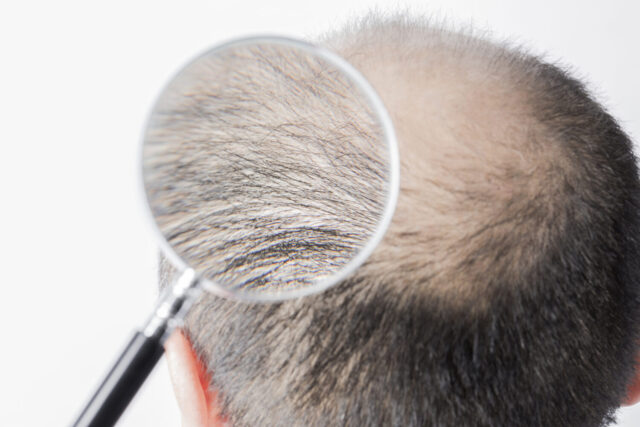
Although there are many causes of thinning hair, most thinning hair in adult men is caused by AGA (male pattern baldness). However, not all thinning hair is AGA.
Here, we will explain the early symptoms of AGA, how it differs from other alopecia, and how to perform a self-check. If you notice the possibility of AGA, it is important to consult a doctor as soon as possible.
Early symptoms of AGA
The initial symptom of AGA is thinning of the frontal hairline and the crown of the head. The hairline begins to recede and an M-shaped or V-shaped hairline becomes prominent. Another characteristic of AGA is that the hair on the top of the head gradually becomes thinner and the scalp becomes transparent.
AGA is a progressive alopecia, and if left untreated, the thinning hair will gradually expand. In the early stages, the hair is only thinning and may not be so noticeable. However, as AGA progresses, the hairline recedes and the thinning hair on the top of the head spreads, thinning to the area near the whirlpool.
The basic principle of AGA treatment is to slow the progression of AGA. The earlier treatment is started, the more likely it is that the progression of thinning hair can be controlled.
Difference between alopecia areata and AGA
Alopecia areata is a type of autoimmune disease characterized by circular patches of hair loss on the scalp. AGA, on the other hand, is a gradual thinning of hair starting from the frontal and parietal areas of the head. Understanding the difference between the two can provide clues to determine if your thinning hair is caused by AGA.
In alopecia areata, multiple alopecia patches may appear on the scalp. The size of the alopecia spots may vary from a few centimeters in diameter to the size of the palm of the hand.
The hair surrounding the alopecia areata is characterized by short, fine hairs. Alopecia areata is believed to be caused by stress and autoimmune diseases.
AGA, on the other hand, begins with thinning hair in the frontal and parietal areas and gradually expands in scope. It is characterized by a receding hairline, thinning of the M-shaped hairline, and thinning of the whorl at the top of the head.
In alopecia areata, the scalp is normal except for alopecia patches, and there is no change in the amount or thickness of hair. In AGA, on the other hand, the hair on the entire scalp, not just the alopecia area, becomes thinner and more hair falls out.
If circular alopecia spots appear on the scalp, it is most likely alopecia areata. However, it is important to get a diagnosis from a doctor, as the two conditions can sometimes be combined.
Difference between diffuse alopecia and AGA
Diffuse alopecia is an alopecia in which hair falls out uniformly over the entire scalp. AGA, on the other hand, is characterized by thinning hair that begins in the frontal and parietal areas and gradually expands in scope. Understanding the difference between the two can provide clues to determine the cause of one’s thinning hair.
In diffuse alopecia, the hair throughout the scalp becomes uniformly thin and falls out. In extreme cases, the scalp may become completely visible. There are many causes of diffuse alopecia, and stress, hypothyroidism, and iron deficiency anemia are thought to be involved.
AGA, on the other hand, exhibits a characteristic pattern of hair loss, including a receding hairline, thinning of the M-shaped hairline, and thinning of the whorls at the top of the head. The hairs on the frontal and parietal areas of the head gradually become thinner and fall out more, while the hairs on the back and sides of the head are relatively unaffected.
In addition, diffuse alopecia occurs in both men and women, while AGA is an alopecia mainly seen in men.
If there is a uniform increase in hair loss across the entire scalp, diffuse alopecia is more likely to be present. However, since the two conditions can be combined, it is important to have a diagnosis by a doctor.
Points to check in the mirror
A self-examination using a mirror can be helpful in determining if your thinning hair is AGA; learn about the hair loss patterns characteristic of AGA and compare them to the condition of your own scalp.
Frontal hairline
First, focus on the frontal hairline; AGA causes recession of the hairline, resulting in an M-shaped or V-shaped hairline.
Use a mirror to check the shape of your hairline. If you notice thinning hairs or areas of hair loss, there is a high possibility that you have AGA.
the top of the head
Next, check the top of the head; as AGA progresses, the hair on the top of the head gradually becomes thinner and the scalp becomes more visible through it. Using a two-sided mirror, look at the top of the head from above.
Hairs throughout the scalp
Also note the volume and thickness of hairs throughout the scalp; with AGA, the hairs throughout the scalp become thinner and less voluminous. If you feel that your hair volume is low when you lift your hair after drying it with your hand, you may have AGA.
However, it is difficult to make a diagnosis just by looking in the mirror; a diagnosis of AGA requires a comprehensive assessment of the condition of the scalp, the course of hair loss, and family history. Self-checking is only a rough guide. If you become aware of the possibility of AGA, it is important to consult a doctor as soon as possible.
Inflammation and itching
AGA is alopecia without inflammation of the scalp. If the scalp is red, itchy, or dandruffy, other skin conditions such as seborrheic dermatitis may be present.
Check family history
Genetic factors play a major role in the development of AGA. Identifying whether someone in your family has AGA is an important part of knowing your AGA risk.
If you have a male blood relative with thinning hair, such as a father or grandfather, you are at high genetic risk for AGA. In particular, if you have a lot of thinning hair on your father’s side of the family, you are more likely to develop AGA.
However, even if no one in the family has thinning hair, the possibility of developing AGA is not zero. Family history is only one risk factor, and the development of AGA depends on a combination of other factors.
For women, thinning hair on the maternal side of the family also requires attention. Thinning hair in women is thought to be related to genetic factors as well as the effects of male hormones. If a woman has a blood relative with thinning hair, such as a mother or grandmother, she is at increased risk for female pattern baldness (FAGA).
Diagnosis by a medical doctor
A consultation with a doctor is essential for a reliable diagnosis of AGA. A dermatologist or a clinic specializing in hair care should make a comprehensive assessment of the condition of the scalp, the degree of hair loss, and the progress of the disease.
Visual inspection and palpation of the scalp
The examination includes visual inspection and palpation of the scalp. The doctor will check the color of the scalp, the presence of inflammation, the condition of the pores, and other findings characteristic of AGA. They will also examine the extent and degree of hair loss in detail, including the degree of recession of the hairline and the amount of hair on the crown of the head.
Observation of hair using a microscope
If necessary, the hair may be observed using an instrument called a microscope. A microscope is an instrument that can magnify the scalp and hair, allowing detailed evaluation of the condition of pores, hair thickness, and density. AGA is characterized by a gradual loss of pore size and an increase in fine hair.
Blood Tests
Hormone levels may also be evaluated by blood tests. Since AGA is affected by male hormones, testosterone and dihydrotestosterone (DHT) levels can be examined to determine the cause of AGA.
In women, blood tests may be performed when hormonal abnormalities such as polycystic ovary syndrome (PCOS) are suspected.
How to improve thinning hair in the frontal area
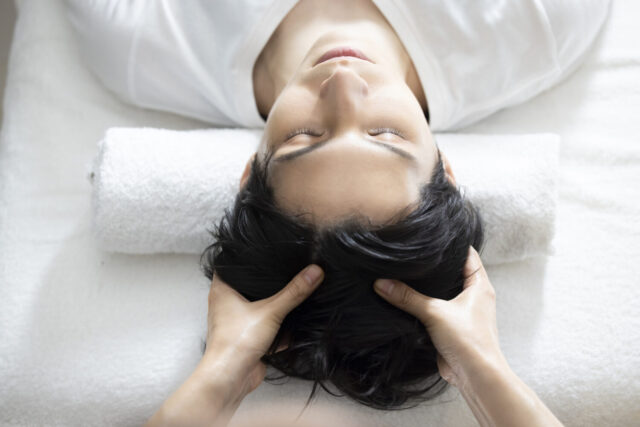
Thinning hair in the frontal area can be caused by a variety of factors, including AGA. In order to improve thinning hair, an appropriate approach tailored to the cause is essential. Here, we detail effective improvement methods for thinning hair in the frontal area.
Remedy
AGA is treated with oral and topical medications. Minoxidil and finasteride are typical therapeutic agents. These drugs are expected to inhibit the progression of AGA and promote hair growth.
Effects and Usage of Minoxidil
Minoxidil is a hair regrowth agent used for topical application. Applied mainly to the scalp, it improves blood circulation to hair matrix cells and prolongs the growth phase of hair. Minoxidil is widely used as the first-line drug for AGA treatment.
Minoxidil is applied twice daily to areas of concern for thinning hair. Take a small amount and apply it to the scalp, massaging it in gently. After application, wash your hands thoroughly and be careful not to get minoxidil into your eyes or mouth.
The effects of minoxidil will begin to appear within 3 to 6 months of starting use. Continued use of minoxidil will allow you to feel the effects of hair regrowth.
However, minoxidil is a symptomatic treatment, and if you stop using it, your hair will thin again. It is important to understand that long-term use is necessary before starting treatment.
Effects and use of finasteride
Finasteride is an oral medication that inhibits the production of dihydrotestosterone (DHT), the causative agent of AGA. By inhibiting the conversion of testosterone to DHT, it is expected to suppress the progression of AGA and promote hair growth.
Finasteride is a drug specifically designed for the treatment of AGA and is taken orally once daily. Usually, a formulation containing 1 mg of finasteride is used. The tablets are taken at a set time each day to reduce DHT levels in the body.
The effects of finasteride begin to appear about 3-6 months after starting to take it. As with minoxidil, continuous dosing is essential. Long-term treatment is required for finasteride, as AGA will progress again if the patient stops taking the drug.
Finasteride is not for use in women because the drug acts on male hormones. In addition, regular blood test monitoring is required while taking the drug. Since side effects such as decreased libido may occur, it is important to take the drug in consultation with a doctor.
Mesotherapy
Mesotherapy is a type of injection therapy that is expected to be effective in improving thinning hair. In mesotherapy, a drug containing ingredients that promote hair growth is injected directly into the scalp to activate hair matrix cells.
The drugs used in mesotherapy include minoxidil, finasteride, vitamins, amino acids, and growth factors. By delivering these ingredients directly to the scalp, it is expected to enhance the supply of nutrients to the hair matrix cells and promote hair growth.
Mesotherapy is a relatively quick treatment. Treatment time varies depending on the extent and degree of hair loss, but usually takes from 30 minutes to one hour. After treatment, the scalp may become temporarily red and swollen, but this will subside within a few days.
The effects of mesotherapy begin to appear about two to three months after the start of treatment. For higher efficacy, regular treatment is essential. It is usually recommended that treatment be performed once or twice a month and continued for six months to a year.
Mesotherapy is also an effective treatment for alopecia other than AGA. It is used for various types of alopecia, including alopecia areata and diffuse alopecia.
Scalp massage
Scalp massage plays an important role in maintaining hair health and promoting hair growth. Moderate stimulation of the scalp improves blood circulation and enhances the supply of nutrients to the hair matrix cells.
The method of scalp massage is simple. Using the bellies of the fingers of both hands, gently rub and relax the entire scalp. Be especially conscious of stimulating areas where thinning hair is a concern. Ideally, massage should be performed for 5 to 10 minutes a day, preferably daily.
When performing a scalp massage, be careful not to claw. Nailing may damage the scalp.
Also, be careful about the amount of force you use. Scrubbing too hard can be hard on the scalp.
Scalp massage is also effective when performed during shampooing. Massage the shampoo into the scalp with your fingers while applying the shampoo to the scalp. The foam from the shampoo will lift dirt from the scalp and enhance the effect of the massage.
Scalp massage is also available at specialized salons. Massage by an experienced therapist will give you a comfort and effect that you cannot get on your own. Regularly receiving a massage at a salon is one way to maintain a healthy scalp and promote hair growth.
Osaka AGA Kato Clinic’s frontal hair growth treatment example
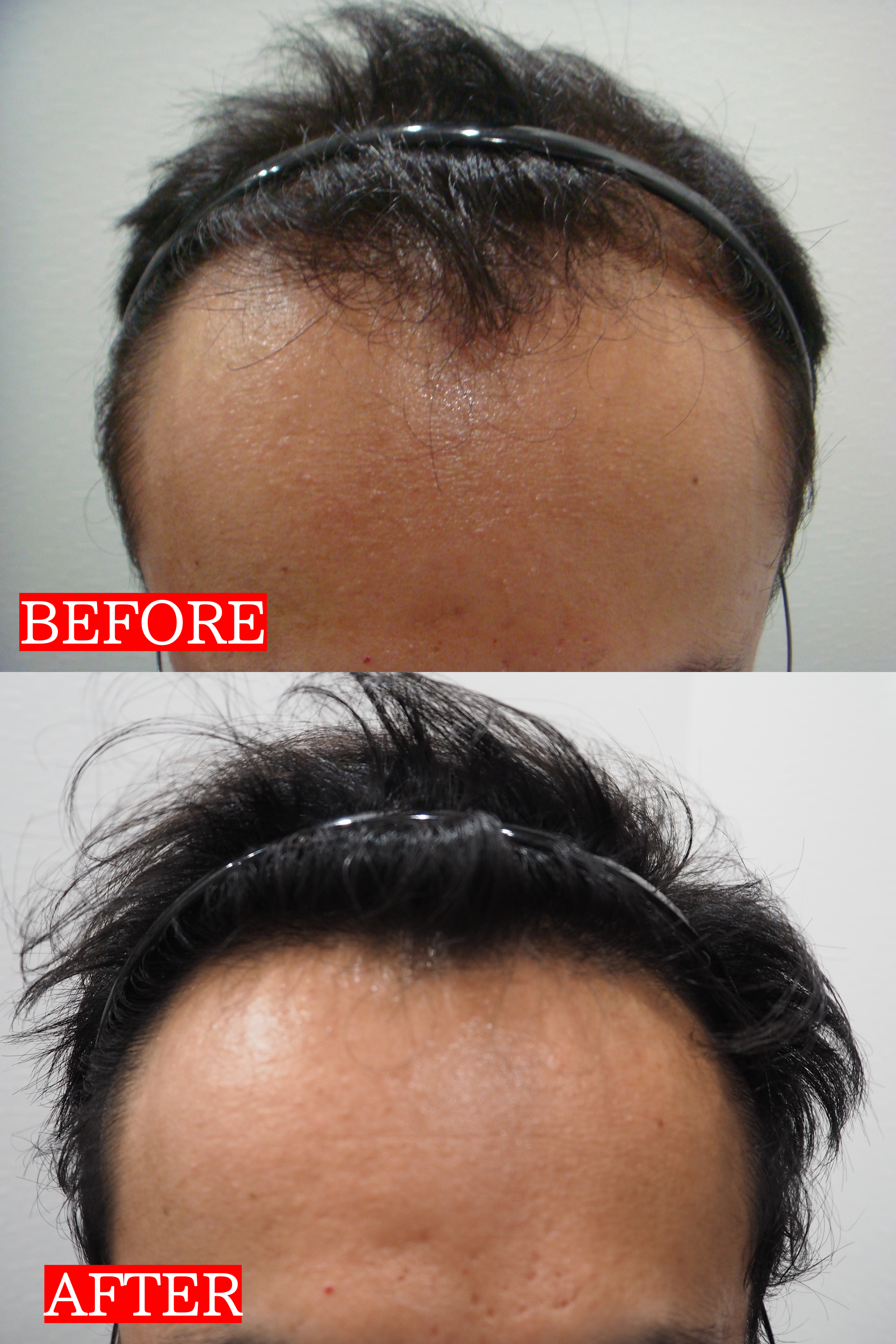
Image taken 6 months after the start of Osaka AGA Kato Clinic original oral drug “Pro Hair+” oral drug treatment
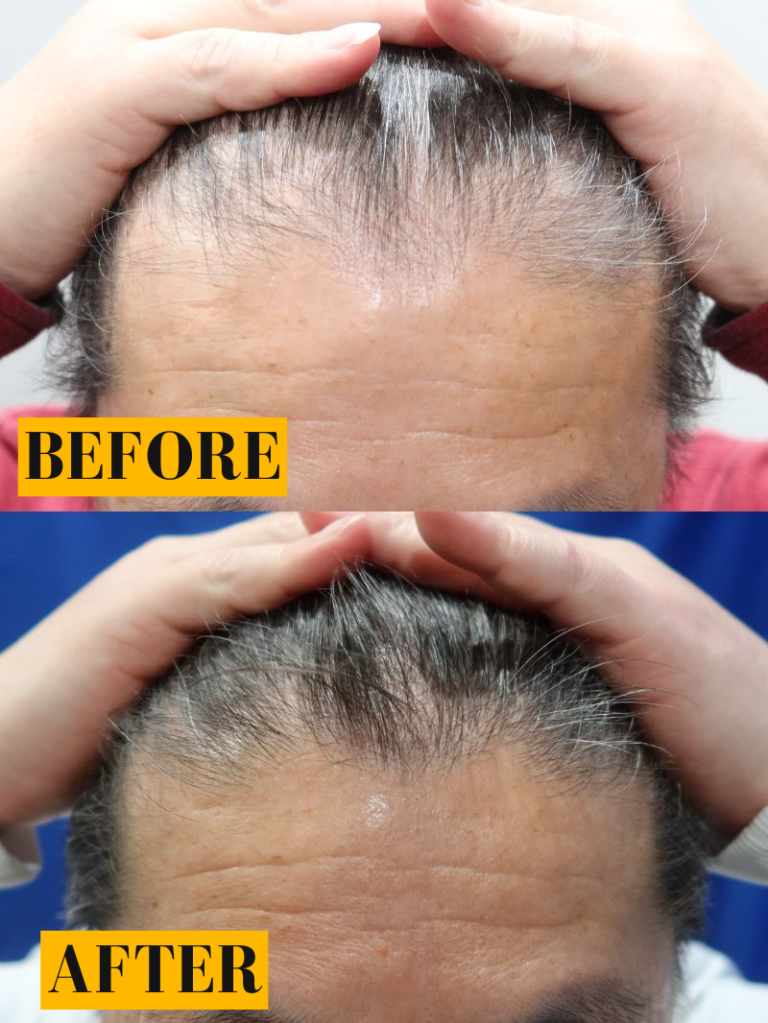
Image taken 6 months after the start of Osaka AGA Kato Clinic original oral drug “Pro Hair+” oral drug treatment
Conclusion
Thinning hair in the frontal area is caused by a variety of factors, including AGA. Multiple causes, including genetic factors, hormonal imbalance, stress, and improper hair care, are intertwined to cause thinning hair. Determining the cause of your thinning hair and selecting the appropriate treatment for the stage of progression is essential to improving thinning hair.
It is also important to review your daily lifestyle and improve the lifestyle that promotes thinning hair. Let’s work on preventing thinning hair starting from familiar areas such as a regular rhythm of life, well-balanced diet, moderate exercise, and stress management.
Early detection and treatment of thinning hair is important. If you are at all concerned about thinning hair, we recommend that you first consult a doctor.
Find the right treatment for you and take the first step toward regaining healthy hair. Facing your thinning hair and actively working to improve it will be the key to regaining your confidence and smile.
Take the first step toward solving your thinning hair problem with a free consultation at the Osaka AGA Kato Clinic, click here to make an appointment on Line.






